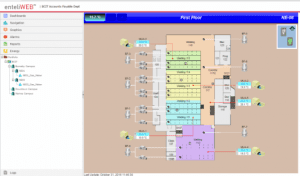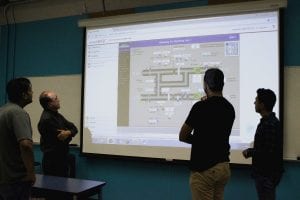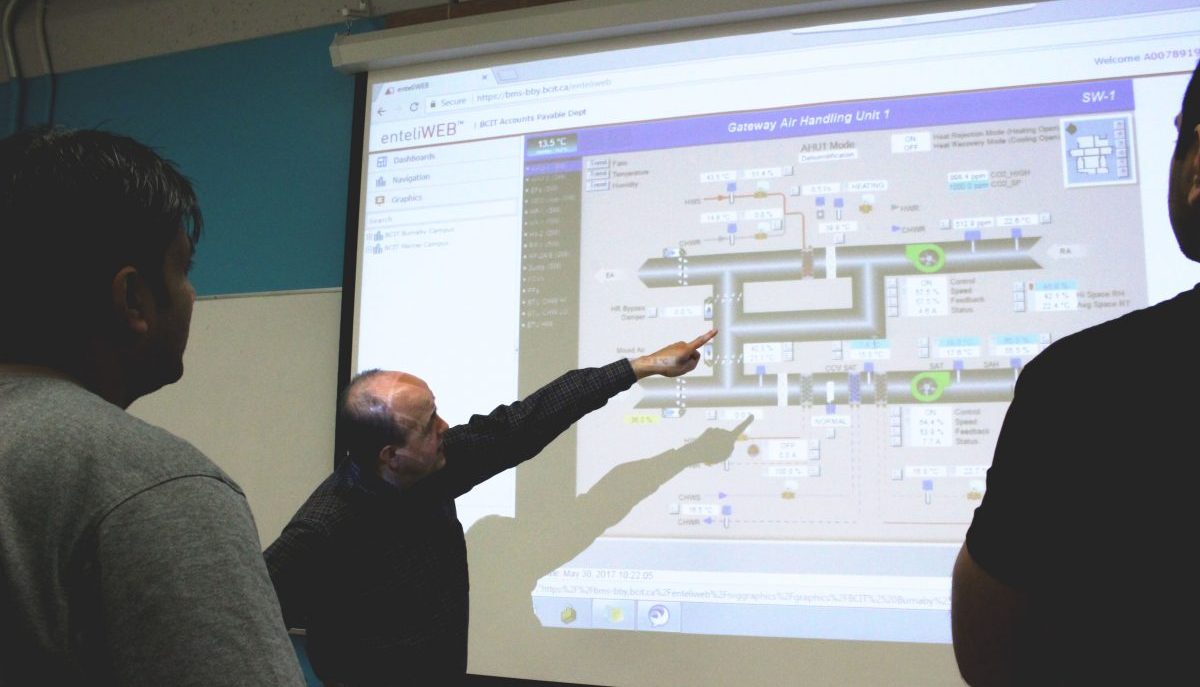
On BCIT campuses, heating, air conditioning, and ventilation in buildings is connected to a direct digital control (DDC) system that consists of a network of sensors, operable devices, and controllers. Coupled with a web-based monitoring interface, the set-up allows facilities operators to examine and adjust building conditions through a computer and from just about anywhere. But the magic doesn’t stop there; the system also proves to be a useful educational tool.
With a focus on creating opportunities for students to gain practical experience, the Building Science program, the Centre for Energy Applications, the Factor Four team, IT Services, and Facilities Services collaborated to create the Building Automation Living Lab Initiative. Faculty can now request access to the real time/near-real-time data collected from BCIT Factor Four buildings (seven buildings on the northeast side of the Burnaby Campus) for teaching resources. Features include:
- A read-only access to the DDC system graphics and logic pages
- Access to a database with all input/output points such as room temperature, outdoor temperature, and CO2 level.
So, what can students achieve with this data?
The trend logs are stored in a database that authorized instructors and students can access. Analyzing this information gives insight to the irregularities of the system and where improvements can be made. Being able to recognize operational issues can enhance the efficiency of the mechanical systems and reduce the energy usage, while keeping the occupants feeling comfortable.
This educational tool is now being used in two BCIT programs: the Building Controls and Energy Management (BCEM) program and the Master of Engineering in Building Science program.
“Our students are building operators and engineers who want to learn more about building systems and how building analytics can be applied. An example of what they would be looking for is a period of time where the air handling unit is both heating and cooling. This is an undesirable condition but happens pretty commonly,” says Craig Somers, an instructor in the BCEM program. “I use demo data regularly but it’s more interesting to do our analytics with real data and real sites,” he adds.
“Students have the ability to develop a greater practical understanding of the underlying operation of real buildings,” says Abbas Rangwala, a Building Science Masters student who has been involved in using the building automation system. “With the access to near real-time data, students can then work with the Facilities Department at BCIT, moving the focus more towards preventive maintenance rather than reactive maintenance, thereby further optimizing the operation of the numerous mechanical systems.”
The excitement about this technology extends beyond the classroom. Even faculty speak of the initiative with pride and look forward to the collaboration with students.

“While Facilities Services’ overarching mandate is always to support the core business of BCIT, living lab initiatives that provide us with opportunities to collaborate directly with that business make our work here unique and exciting,” says Peter Morgana, Manager, Facilities Services. “We’ve invested almost $200,000 over the past two years to upgrade all the building automation control hardware and network infrastructure on the Burnaby campus to the most current technology. (We still have a few pneumatically controlled buildings in the museum to remind us of a much lower-tech era!) These upgrades have transitioned us to powerful web-hosted, user-friendly interfaces, tools and dashboards, creating opportunities for innovation limited only by imagination. Access to the system for our staff, students, and faculty is now as simple and secure as logging onto any other website. I’ve never worked anywhere where I had the help of the world’s brightest minds looking over my shoulder!”
Alex Hebert, BCIT’s Energy Manager, recalls his mechanical engineering education at a traditional university and how he graduated without being exposed to real building mechanical systems. “I envy our students. Imagine being enrolled in an indoor air quality course and having the instructor ask you to comment on your perception of the air-quality in the classroom you are sitting in. Too hot, too cold, too stuffy? No problem, let’s have a look at the air handling unit serving this classroom and see what we can improve. And then you go, diving directly into the live DDC system and troubleshooting the sequence of operation. Building operating systems are very complex and this is an example of smart education for a complex world.”
During class, Instructor Rodrigo Mora pulls up the DDC system graphics of a room in SW1, a large building on the Burnaby Campus, and asks his students where there may be a problem. His students work on using building automation information to provide thermal comfort and clean indoor air quality for building occupants.
The result of this initiative has demonstrated the value BCIT places on practical education. With access to these tools, instructors can enhance the learning experience of students and equip them with the skills that they need to create a more efficient and sustainable building environment.
